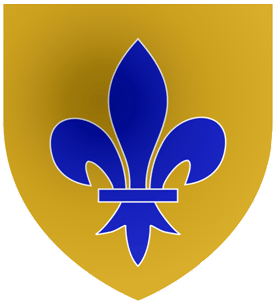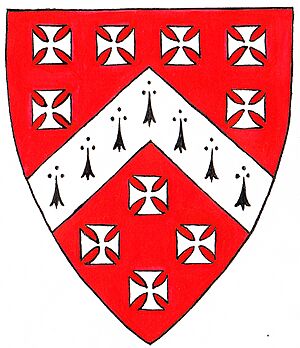Sir William Portman, 6th Baronet facts for kids

Sir William Portman, 6th Baronet (born 5 September 1643 – died 18 March 1690) was an important English politician. He was also a Fellow of the Royal Society. Sir William served as a Member of Parliament (MP) in the House of Commons for many years, from 1661 until his death in 1690.
William Portman was the son of Sir William Portman, 5th Baronet and his wife, Anne Colles. He became a Baronet when his father died in 1646.
In 1661, Portman was chosen to be an MP for Taunton. He held this seat until 1679. After that, he was elected MP for Somerset and served there until 1685. He then became the MP for Taunton again and remained in that role until he passed away in 1690.
Sir William Portman was married three times. However, he did not have any children. Because of this, his Baronet title ended when he died.
Contents
Sir William Portman's Life and Work
His Early Years and Political Start
William Portman was the oldest son of Sir William Portman, 5th Baronet (1610–1648). His family lived at Orchard Portman. His mother was Anna Colles. His father was also an MP for Taunton but was removed from Parliament for supporting the King. When his father died in 1648, William became the 6th Baronet.
He studied at All Souls' College, Oxford in 1659. When the King returned to power in 1660, William was made a Knight of the Bath. He represented Taunton in Parliament from 1661 to 1679. He also served as an MP for Somerset from 1679 to 1681. From 1685 until his death, he was again the MP for Taunton. He was known as a very influential politician in western England.
A Key Role in History
During the time of King Charles II, there was a big debate about who would become the next king. Sir William strongly supported the King. In May 1685, while he was in Parliament, he received a secret warning. It was about a planned uprising by the Duke of Monmouth in the west of England.
Sir William quickly took action. He ordered searches of mail coaches near Taunton. He hoped to find letters that showed who was planning the rebellion. He also helped organize the local army, called the militia.
After the battle of Sedgmoor in July 1685, Portman and the Somerset militia set up a line of guards. This was to stop Monmouth from escaping. On July 8, Sir William and Lord Lumley captured the Duke of Monmouth. They found him near Ringwood. They made sure Monmouth was safely delivered to Whitehall.
In November 1688, Sir William Portman joined Prince William of Orange in Exeter. He brought many followers with him. It is believed that Prince William wanted to give him an important job. However, Sir William died at his home, Orchard Portman, on 20 March 1690. He had also become a Fellow of the Royal Society in 1664.
His Family and Legacy
Sir William Portman married three times but did not have any children. His first wife was Elizabeth Cutler, whom he married in 1661. His second wife was Elizabeth Southcote, whom he married in 1674. His third wife was Mary Holman, whom he married in 1682.
Because he had no children, Sir William left his large estate to his cousin, Henry Seymour (who died in 1728). Henry Seymour then took the name and family symbols of Portman. Henry also did not have any sons.
So, the next person to inherit was another cousin, William Berkeley (who died in 1737). William Berkeley also changed his name to Portman. He combined his family's symbols with the Portman family symbols. His grandson, Henry William Portman, later gave his name to Portman Square in London. This famous square started being built in 1764. Bryanston Square is named after Bryanston, a large estate Sir William bought in Dorset before he died.


